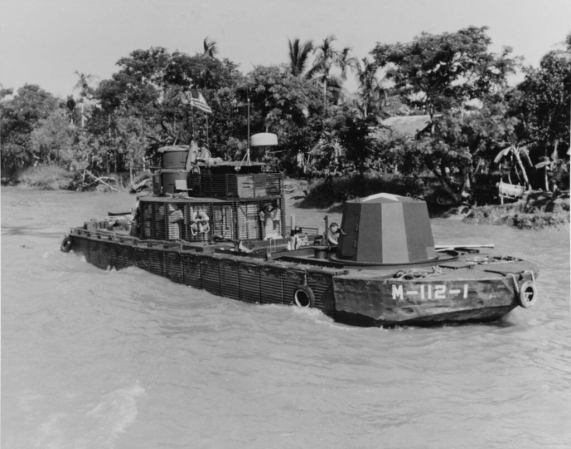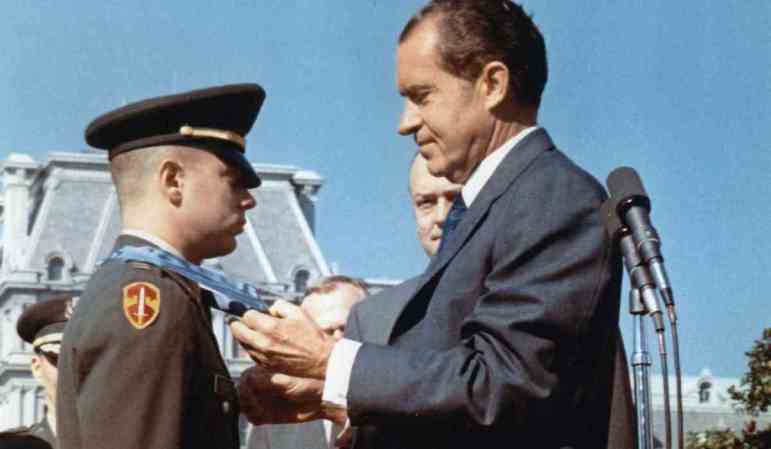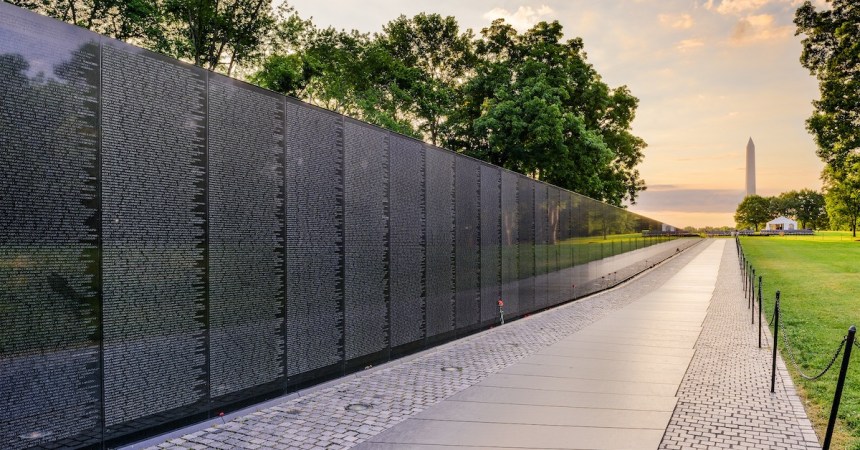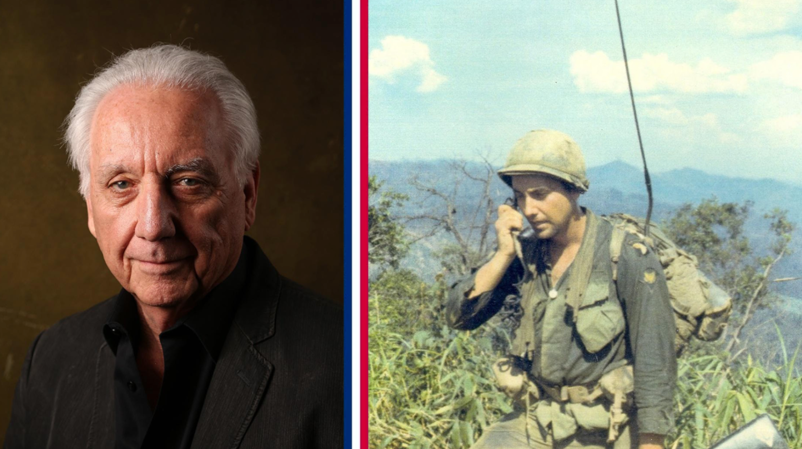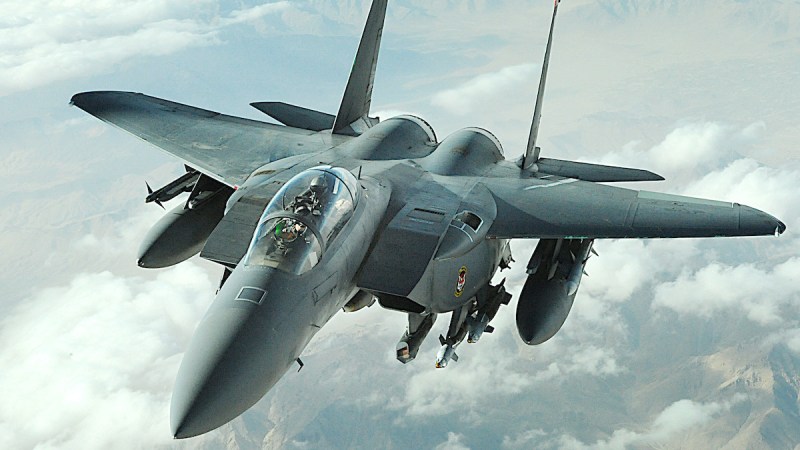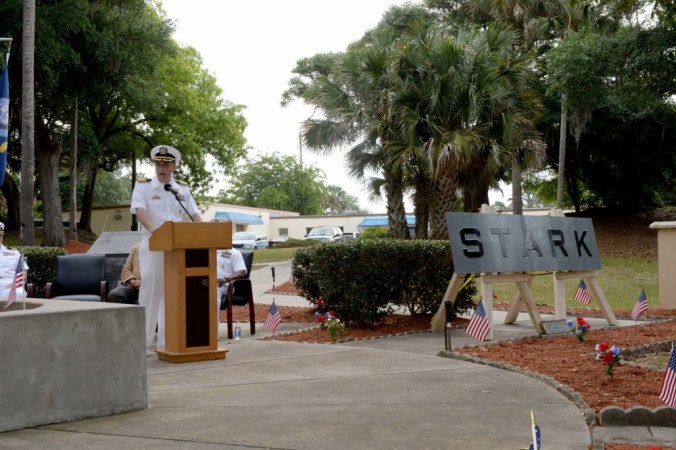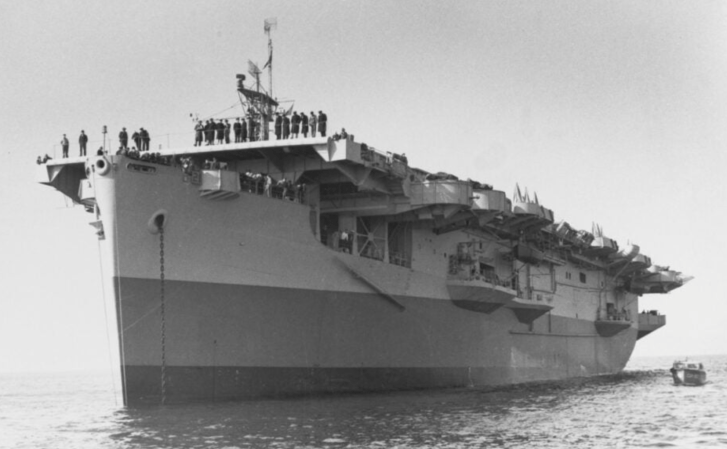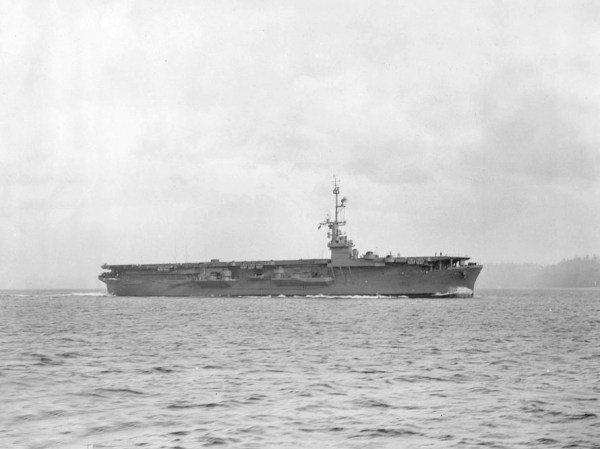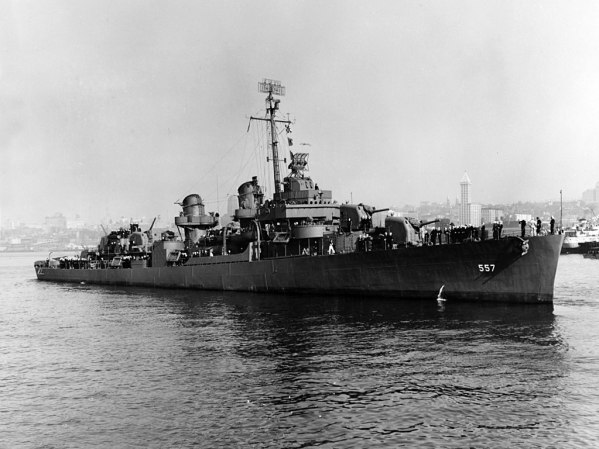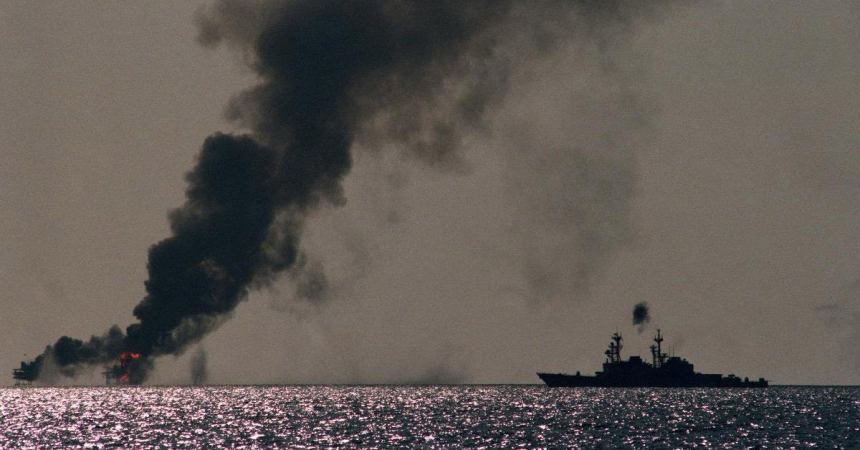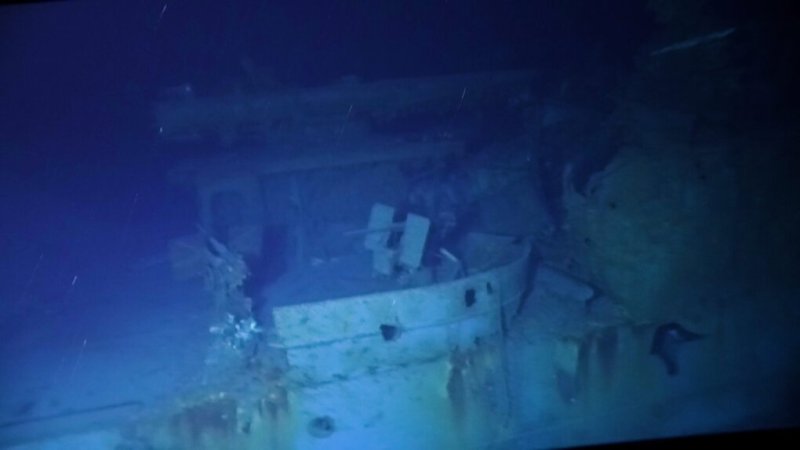Historically, the Vietnam War is one of America’s longest-running conflicts — only Operation Enduring Freedom has been longer. But, of all the chaos and carnage that characterized the Vietnam War, one of the most notable clashes is similar to one performed on the Arleigh Burke-class guided-missile destroyer USS Cole (DDG 67) about 36 years later.
The date was May 2, 1964. Viet Cong commandos had been trying to hit an American transport ship in Saigon to stop the flow of materiel to the South Vietnamese government. Two ships, the USNS Card and the USNS Core, had been serving as transports for helicopters and other essentials. The ships were World War II-era Bogue-class escort carriers that displaced about 16,600 tons and could travel at a top speed of 18 knots while carrying a dozen F4F Wildcats and nine TBF/TBM Avenger torpedo bombers.
U-Boat.net credits aircraft from the Card with sinking eight Nazi subs. Planes from the Core put four U-boats to rest on the seafloor.

After World War II, these carriers were too small to operate jets and a bit too slow for front-line service. Still, when a ship has a flight deck that is 439 feet by 70 feet — almost 31,000 square feet – and a hangar deck of roughly the same size, it’s still useful. So, the Military Sea Transport Service (the forerunner to today’s Military Sealift Command) took these ships. After all, they were pretty much free.
According to the National Interest, the Viet Cong managed to pull off the May 2 attack by sending a commando through the sewer system. A pair of limpet mines were stashed by the sewer’s exit, waiting for the commando as swam out toward the ship. He then planted the limpet mines on the side of the Card, set the timer, and made a clean getaway. At three in the morning, the mines went off. Severely damaged, the Card settled on the bottom of the harbor with five of her crew killed.

But she didn’t stay there. It took the Navy 17 days to do the temporary repairs required to get the Card out of the harbor. By the end of the year, the former escort carrier was back in service, and she made other runs carrying materiel. She did so for five more years after returning to service. In 1971, the Card was scrapped. Any claims that the Communists in Vietnam sunk a carrier are nothing but propaganda.




